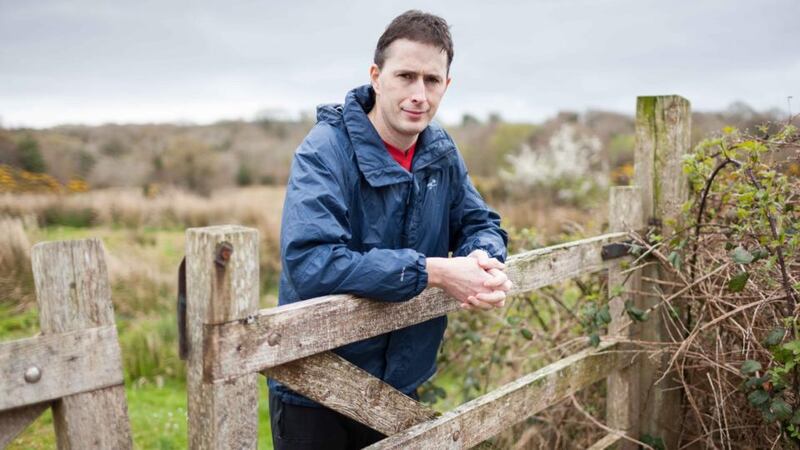I'm up to my ankles in muck and I'm lost. I'm in the middle of an experiment. In his new book Running Free , Richard Askwith, the British news editor turned celebrated running author, tries to persuade us to adopt a whole new way of running. And getting lost is an important part of it because when we're lost we're more sensitive to our environment.
Irish runners are in the grip of an international frenzy. Since the mid-90s, the global running industry has mushroomed by 500 per cent to become the fastest growing sport in the world. Today, running is about times and distances, specialist equipment and self-improvement.
'Mindful' running
Askwith says we have it all wrong. His book is a hymn to natural or "mindful" running: running in a landscape that stimulates you and embracing your environment instead of blocking it out.

It means exploring possibilities rather than measuring time. Essentially, it’s running because you want to.
Is his proposal realistic? Can running really be about discarding your stopwatch and running in the moment? Drawing on an unsurpassed propensity for getting lost, I put his theory to the test.
Askwith recommends running at daybreak to catch nature unveiling itself and it’s just before 6:30am on a crisp Sunday morning when I start my run near Lough Graney in Cahermurphy, east Clare – about half-way between Gort and Killaloe.
As dawn slowly leaks through the sky I have a genuine sense of anticipation, something I rarely feel before a run.
As I fringe the lake and go through a forest, I hear something new: my running breaths. I never run without an iPod, but a pillar of natural running is removing your headphones and opening your ears.
Without my Johnny Cash playlist drowning it out, I’m immediately aware of the shallow cadences of my breaths and the erratic rhythm of my feet as they trace shifting textures: bulging roots, a carpet of moss, a slippery hollow.
As I leave the forest and run down a minor road, I feel like I’m starting to understand Askwith’s conviction that natural running stimulates your senses.
I notice that I’m flanked by a battalion of daffodils, their heads bowed as though waiting for the coming sun, and how, behind them, stand two sickly, hungover trees stubbornly holding on to their autumn coat.
In the interests of natural running, I decide to get lost. I lurch to my right, cross a stream and slowly (very slowly) trudge up a soggy hill and charge down the other side.
My run is scored by a symphony of birdsong, but the effect of the trilling and chirruping is offset by the gurgling of my feet, as they sink into mucky holes, and the pop when I pull them out.
After climbing four or five knotty, barbed wire fences that seem to enclose only small tracts of marshland and after following too many dead ends, I resort to an activity I rarely do during a run: I walk.
Walking
Getting lost might make us more aware of our environment, but I've a better chance of figuring out where I am by walking rather than running.
It’s while walking across a sliver of soft scrubland that I sink to my ankles. By now, I’ve been doing more walking than running and I pine for my usual anonymous, clinical runs.
But if your surroundings can stifle you, they can also inspire you. Glimpses of Lough Graney urge me on during a long, uphill road climb; with every step it seems to reveal a little more of itself.
It unfurls within a frame of chocolate-box green fields and a magenta-streaked sky.
During most of my runs, I’m immune to the landscape as my head generates spools of “to do” lists. Any acknowledgment of the present is suspended in favour of getting to the end.
But this morning, I’m thinking about where I am, what I’m doing and how to find my way. Is the exhilaration enough to make me forget that I’m running?
Of course not. With every stride my feet are trying to absorb three times my body weight, my breathing is burning through my chest and I’m, inevitably, willing my car into view.
As I loop back to the start, I meet a green Renault van. It’s the first person and the first artificial light I see on my adventure. It feels like it’s breaking a spell. I’ve been out over two hours and I’ve covered about 15km.
Natural running isn’t just for the starry-eyed. Psychological research shows that exercising in green places is better for you. The 2008 Scottish Health Survey claimed that exercising in “natural environments” (such as parks or woodlands) was 50 per cent more beneficial for mental health than exercising in a gym.
One of the things I like about Askwith is his moderation. He understands that our approach to running is based on our priorities and commitments (he jokes that he has experienced Seven Ages of Running).
Askwith suggests natural running as one option within a catalogue of running genres we can choose from during our running life. I won’t do it every week, but I will return to it for the sense of renewal it promises and to remind myself why I run.
Running Free: A Runner's Journey Back to Nature
is published by Yellow Jersey Press.









